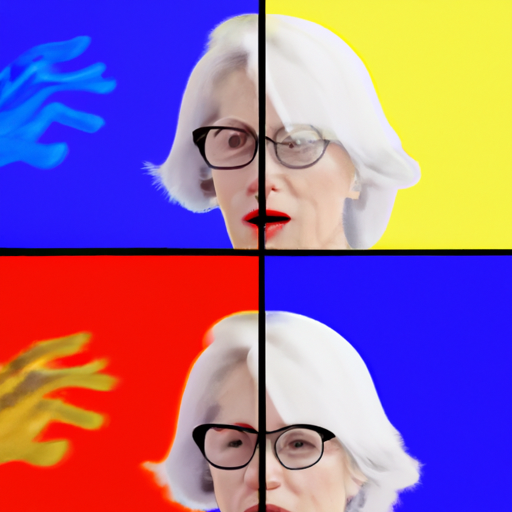-
Table of Contents
- Neurodiversity in Illustration and Design
- The Power of Neurodiversity in Illustration and Design
- Case Studies: Neurodiversity in Action
- 1. Temple Grandin – Autism and Animal Illustration
- 2. Matt Savage – Synesthesia and Music Design
- 3. Sarah Hendren – Disability and Assistive Technology Design
- Creating an Inclusive Environment
- Conclusion
Neurodiversity in Illustration and Design
Neurodiversity is a concept that recognizes and celebrates the natural variations in human neurological functioning. It challenges the notion that there is a “normal” or “typical” brain, and instead embraces the idea that neurological differences, such as autism, ADHD, dyslexia, and others, are simply variations of the human experience. In recent years, the concept of neurodiversity has gained traction in various fields, including illustration and design. This article explores the importance of neurodiversity in these creative industries and how it can lead to more inclusive and innovative outcomes.
The Power of Neurodiversity in Illustration and Design
Neurodiversity brings a unique perspective to the world of illustration and design. By embracing and incorporating the talents and strengths of neurodivergent individuals, these industries can tap into a wealth of creativity and innovation. Here are some key reasons why neurodiversity is essential in illustration and design:
- Alternative Ways of Thinking: Neurodivergent individuals often have different thinking patterns and cognitive processes. This can lead to fresh and unconventional approaches to problem-solving and design challenges. Their unique perspectives can help break free from traditional design norms and create truly original and impactful work.
- Attention to Detail: Many neurodivergent individuals possess a remarkable attention to detail. This can be a valuable asset in illustration and design, where precision and meticulousness are often required. Their ability to notice and focus on intricate details can result in visually stunning and highly refined artwork.
- Enhanced Visual Thinking: Some neurodivergent individuals have a heightened ability to think in images and visualize concepts. This can be particularly advantageous in illustration, where the ability to translate ideas into visual representations is crucial. Their visual thinking skills can bring a unique depth and richness to their artwork.
- Empathy and Sensitivity: Neurodivergent individuals often possess a heightened sense of empathy and sensitivity. This can enable them to create illustrations and designs that resonate deeply with others. Their ability to understand and connect with diverse audiences can result in work that is both relatable and impactful.
Case Studies: Neurodiversity in Action
Several notable case studies demonstrate the power of neurodiversity in the world of illustration and design. These examples highlight the unique contributions of neurodivergent individuals and the positive impact they can have on their respective industries.
1. Temple Grandin – Autism and Animal Illustration
Temple Grandin, a renowned autism advocate and animal behavior expert, has made significant contributions to the field of animal illustration. Her unique perspective as an individual with autism has allowed her to understand and depict animals in ways that others may not have considered. Grandin’s illustrations capture the essence of animal behavior and have helped educate and raise awareness about the needs and experiences of animals.
2. Matt Savage – Synesthesia and Music Design
Matt Savage, a musician and artist with synesthesia, has brought his unique sensory experiences to the world of music design. Synesthesia is a neurological condition where the stimulation of one sensory pathway leads to experiences in another. Savage’s ability to see colors and shapes in response to musical sounds has allowed him to create visually stunning album covers and concert visuals. His work adds an extra layer of sensory richness to the music and enhances the overall experience for the audience.
3. Sarah Hendren – Disability and Assistive Technology Design
Sarah Hendren, a designer and researcher, focuses on disability and assistive technology design. Her work challenges traditional notions of disability and aims to create inclusive and empowering solutions. Hendren’s designs incorporate the perspectives and needs of neurodivergent individuals, resulting in products that are not only functional but also aesthetically pleasing. Her work demonstrates the power of neurodiversity in driving innovation and creating solutions that benefit a wide range of users.
Creating an Inclusive Environment
To fully harness the benefits of neurodiversity in illustration and design, it is crucial to create an inclusive environment that supports and values neurodivergent individuals. Here are some strategies to foster inclusivity:
- Education and Awareness: Educate teams and organizations about neurodiversity and its value in the creative process. Raise awareness about the strengths and talents of neurodivergent individuals and challenge stereotypes and misconceptions.
- Flexible Workspaces and Processes: Create workspaces and processes that accommodate different sensory needs and thinking styles. Provide options for quiet spaces, adjustable lighting, and flexible schedules to support neurodivergent individuals in their creative work.
- Collaboration and Communication: Foster a culture of collaboration and open communication. Encourage diverse perspectives and actively seek input from neurodivergent individuals. Emphasize the importance of teamwork and value the contributions of all team members.
- Accessibility and Inclusive Design: Ensure that designs and illustrations are accessible to a wide range of audiences. Consider the needs of individuals with different cognitive abilities and sensory sensitivities. Incorporate inclusive design principles to create work that is usable and enjoyable for everyone.
Conclusion
Neurodiversity brings a wealth of creativity, innovation, and unique perspectives to the fields of illustration and design. By embracing and valuing neurodivergent individuals, these industries can create more inclusive and impactful work. The case studies of Temple Grandin, Matt Savage, and Sarah Hendren demonstrate the power of neurodiversity in driving innovation and creating work that resonates with diverse audiences. To fully harness the benefits of neurodiversity, it is essential to create an inclusive environment that supports and values neurodivergent individuals. By doing so, illustration and design can become more diverse, innovative, and reflective of the rich tapestry of human experiences.
